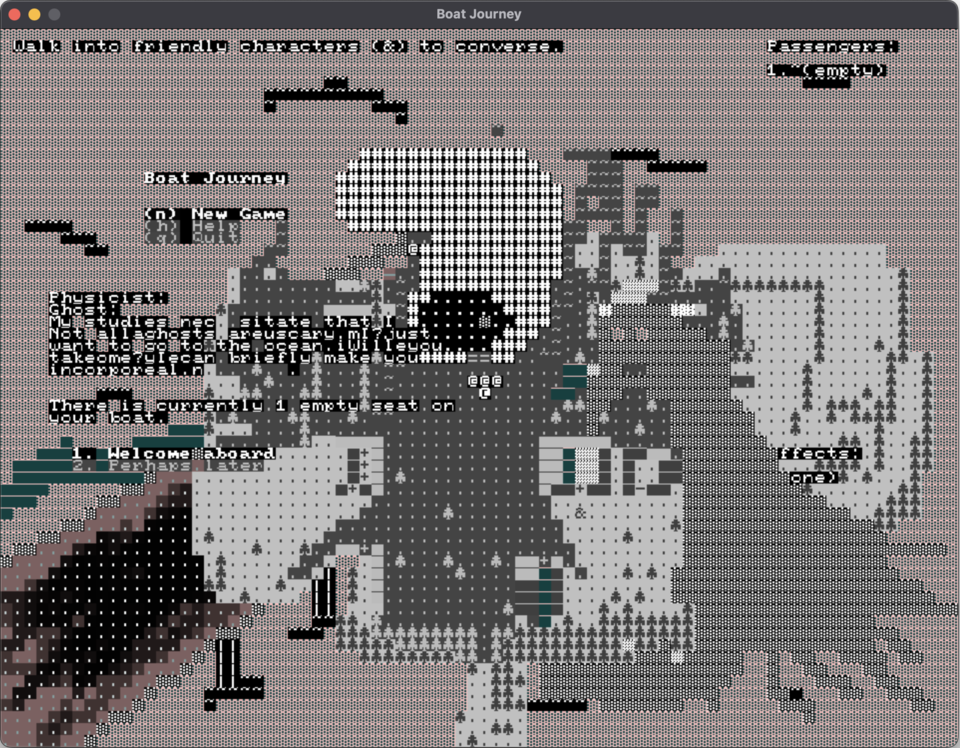Chargrid SDL Frontend
One problem with using the rust programming language for game development is the notoriously slow compile times. For my recent 7DRL project Boat Journey an incremental debug build takes about 6 seconds on my main development machine. This is frustratingly slow when making many minor gameplay tweaks during playtesting.
Most of that time appears to be spent linking the binary rather than building individual libraries as the way I’ve structured the project means that only 3 or 4 libraries need to be recompiled after changing gameplay logic. The graphical version of Boat Journey has 307 dependencies when built on linux (at the time of writing). The number of dependencies varies across systems due to different libraries being used to get access to low-level system and graphics APIs. More than half of Boat Journey’s dependencies are transitive dependencies of a single crate wgpu which is the graphics library it uses for rendering.
I had an hypothesis that the slow link times were due to the large number of dependencies so I hacked together a SDL version of my chargrid library that sits between the game and IO (including rendering). SDL is a cross-platform media library with APIs for rendering, input handling, and audio (among other things). Unlike wgpu which is written mostly in rust, SDL’s rust library is just bindings to a shared library that must be installed separately, so there are fewer dependencies and less code to compile. When I build Boat Journey on top of the SDL version of chargrid it has only 147 dependencies on linux and incremental debug builds are down to about 2 seconds.
Because SDL depends on shared libraries, SDL builds of Boat Journey are harder to distribute than wgpu builds. Users would either have to install SDL themselves, or I would have to bundle SDL’s libraries into the game’s distribution. Also there are some problems anti-aliasing text in SDL that means the text doesn’t look as good as in wgpu for certain font sizes. For these reasons I won’t be releasing any games made with the SDL version of chargrid, but I’ll probably be using it for most of the testing I do prior to the release of a game thanks to its relatively fast compile times.
This screenshot shows Boat Journey running on SDL when I accidentally swapped some colour channels around during testing, and before I got it to clear the canvas between each frame.
